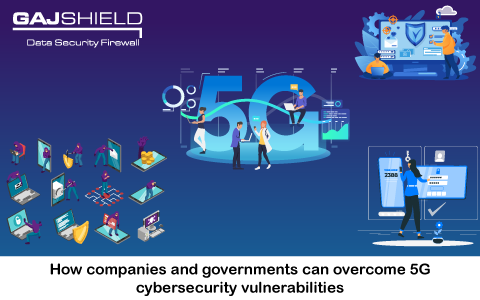How companies and governments can overcome 5G cybersecurity vulnerabilities
The power and scope of mobile data have come a long way. Once 3G was hailed as the fastest type of mobile data available. Then came 4G to dismantle all those notions. Now, 5G is here to elevate the speed, power, and scope-related aspects of mobile data yet again. As a part of the 5G revolution, hardware components will be replaced with software ones, so future updates and innovations can take place in much less time as there will not be major infrastructural, mechanical, or electronic changes to be made.Instead, like Android or iOS updates, the upgrades to phone data will be more software driven. Now, while that makes the process of data transmission and updates more streamlined, there is a new dimension of concern now in mobile data usage in the age of 5G — vulnerabilities to cyber-attacks.

Before getting to know how governments and enterprises can make 5G more secure for users globally, one must know the main data security risks associated with the platform as well. Some of the commonly associated threats or areas of concern when it comes to 5G are listed below.
What are the main 5G vulnerabilities?
The progressively higher percentage of software elements compared to hardware infrastructure in any given 5G network makes it vulnerable to cyber-threats such as malware attacks, phishing, DDoS attacks, threats that may generally not be of great concern in a hardware-based ecosystem. Users, administrators, and governments must know about certain threats before 5G networks and devices and, by extension, large swathes of information are accessed illegally, distorted, destroyed, changed, or manipulated in any way. Once such threats are identified, they must be handled promptly and with a degree of urgency to limit any kind of damage to user devices or data.
Data corruption or breaches
Arguably the most common problem. And yet, data compromise of any kind in a 5G network is also the most important concern for users, telecom companies, and governments. There are several ways in which data corruption or breaches can take place. For example, imagine a situation in which malicious elements access a mobile phone of a user that is on a 5G network. Once that happens, such elements can take control of the data within such a device and corrupt it or send it to someone else. This can be devastating for the owner of such a device but imagine such a situation for the owners of thousands of devices. That is the point at which data corruption can assume truly debilitating proportions and consequences for millions of 5G users.
If you think that cell phone users are badly affected by a data compromise attack, you may want to think again. Governments and other public bodies can be hugely affected by data breaches and data compromise. For instance, it would be a huge security and defence-related disaster if terrorists or cybercriminals get their hands on defence secrets or other highly confidential information that can affect the safety of a country and its people.
Edge device attacks
A 5G network, like any data network contains several edge devices connected to it. Edge devices form the basis of any data network. So, apart from data corruption, the edge devices and their in-built software and OS are also vulnerable to cyber threats such as malware, viruses, phishing, and other kinds of attacks in a 5G network. This affects the physically connected devices as much as those that are connected to dedicated cloud infrastructure networks, wireless remote devices, and other connected entities. The number of edge devices has gone up in recent times, especially in workplaces where the concept of Bring Your Own Devices (BYOD) is an emerging trend instead of the employees using the employer's computers. Although this is convenient for users, but it also opens and keeps the door open for hackers and other kinds of criminals initiating such attacks in order to steal critical information from users and such edge devices. Edge devices in a 5G network, whatever that may be, such as mobile phones, tablets, TVs, and other devices need cyber protection services as much as the entire 5G network and each and every entity connected to it.
Apart from these, there are several other 5G data security vulnerabilities.
What are the resolutions to these vulnerabilities?
There are several conventional and unconventional ways to deal with 5G data security vulnerabilities. Some of the most effective ways for the purpose are:
Employing a holistic data security model
A holistic approach to data security makes it mandatory for every component in your organisation, or in the society, to actively contribute to the data security infrastructure. This makes the process of cybersecurity much more organic in nature as every stakeholder involved plays a role — which could either be maintaining cyber-hygiene, providing information or threat intel to the authorities regarding an attack that they may have faced, amongst other things. This creates a much more cohesive data security bond between different players involved.
Using renowned IAM tools
In 5G, identity and access management are critical for users. Businesses need to use intelligent firewalls and high-quality biometric tools to safeguard the access controls of their physical network tools and devices as well as their cloud databases that may very well be a part of the 5G network.
For such solutions and many more, Gajshield is the right place for businesses and governments. You can contact Gajshield to get more information about our intelligent data security firewall systems and other world-class data security tools.
Get In Touch With Us
Subscribe to our Newsletter
2025 © GajShield Infotech (I) Pvt. Ltd. All rights reserved.
